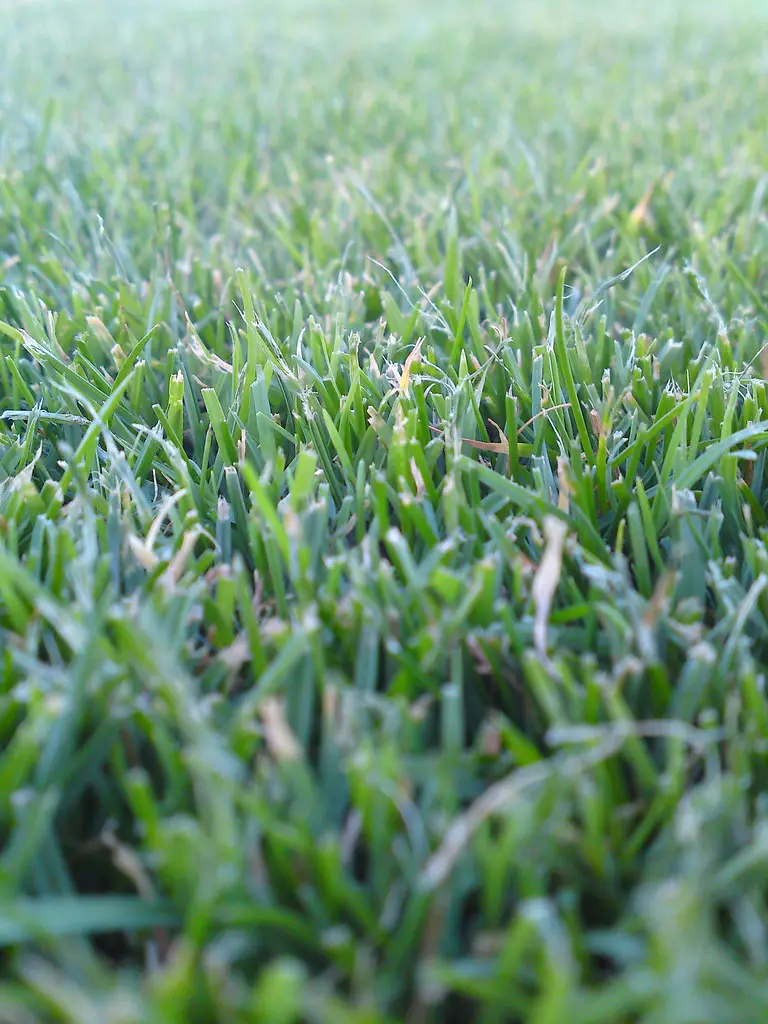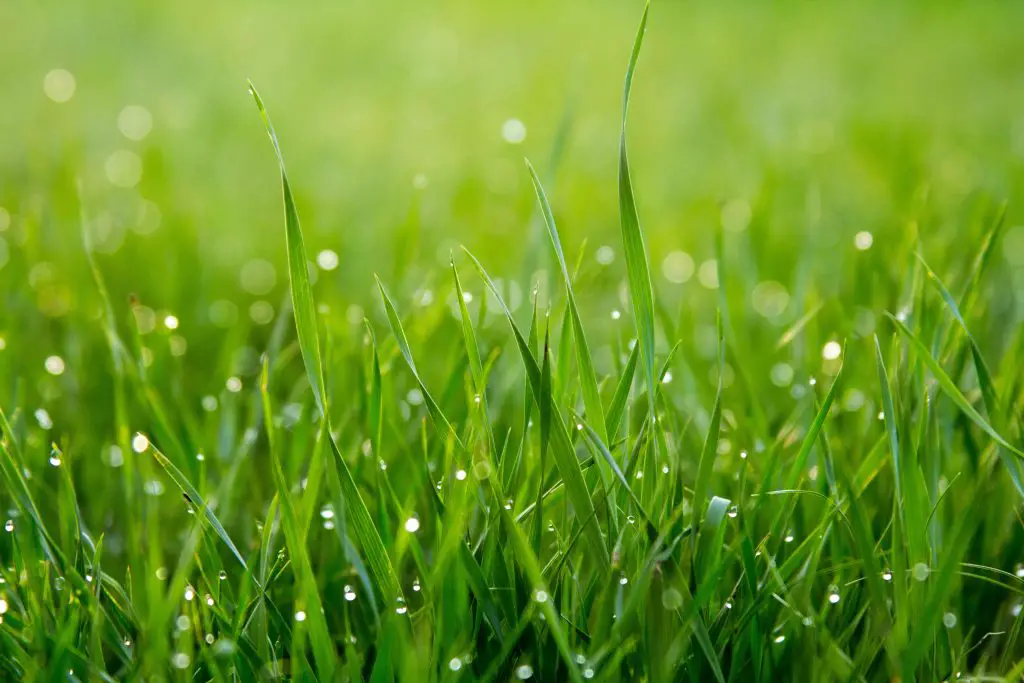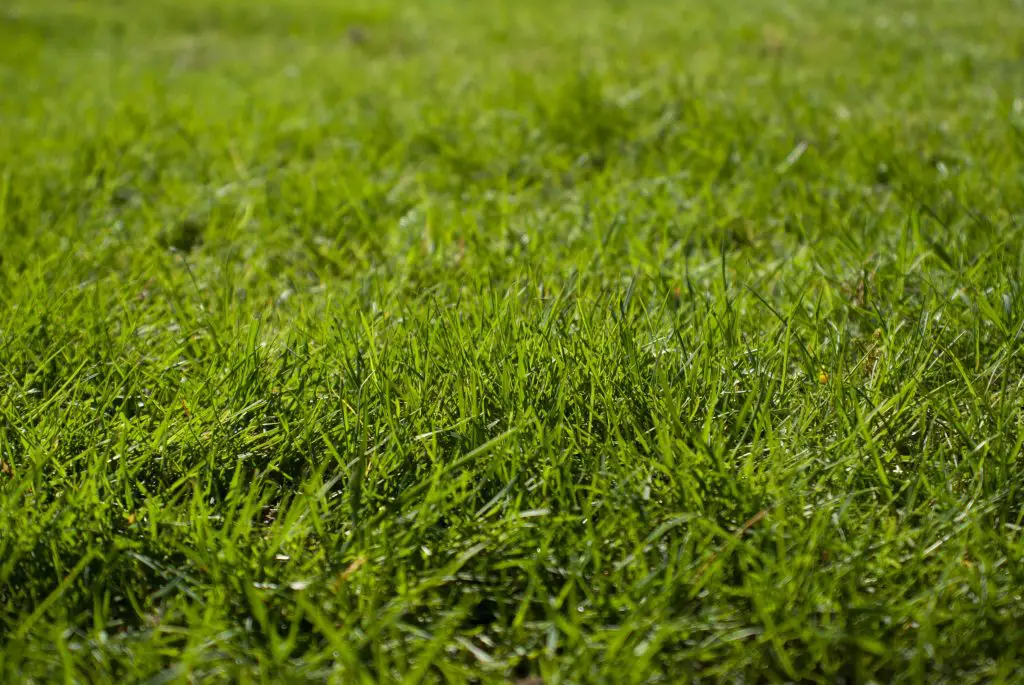Do Grass Seeds Need To Be Buried? Will They Germinate? When planting a new lawn or patching up wear points on an existing lawn it is important to understand how to plant the seeds. Do they need to be buried like other plants seeds in order to germinate or can you just sprinkle them over the surface?
Grass seeds do not need to be buried in order to germinate. They will grow well if they are just sprinkled on the surface of the soil and left to grow as they require light to germinate.
When Should Grass Seeds Be Planted?
Grasses grow best at temperatures between 50 and 70°F, (10 to 21°C) which means that the optimal time to plant grass seeds in most locations is in spring or autumn when the temperatures are somewhat cooler. This is advantageous because it ensures that the grass seed remains moist for longer.
However, my personal preference is to plant grass seeds in spring as the weather is starting to warm up as this is a period in which it is sufficiently warm to germinate the seeds and there is also usually significant amounts of rainfall which will reduce the amount of watering that is required for the seeds.

How Long Does Grass Seeds Take To Germinate?
If the conditions are reasonable the grass seed will generally take somewhere between 7 to 21 days to germinate depending upon the specific variety that is been grown.
How Do I Stop Birds From Eating Grass Seeds?
One of the most common problems when planting grass seeds is it they are often eaten by birds as a result of this it is common to get patchy germination. However, there are a couple of things that can be done to reduce the chances of the seed being eaten.
The first thing we recommend if you are seeding a small area is to press the seeds into the ground by walking on the area that you’ve just seeded to make it difficult for the birds to get the seeds out of the ground.
The second option is to create a physical barrier. There are several methods that you can use to do this which include simply placing netting across the area. This can be done just by laying netting on the ground and pegging it down for the first few weeks until the blades of grass start to appear.
The second method is to use old branches and sticks that are sufficiently dense to keep the birds out while still allowing light to reach the seeds to ensure that they germinate. However, these measures are not suitable if you are sprouting seeds over a large area.
The alternative method that can be used is to place an owl or cat statue nearby to try and trick the birds into thinking that there is a predator nearby.
The alternative method employed is to provide an alternative food source for the birds during the period in which germination is occurring. This food source should be located away from the area where the seed has been planted. The reason for this is that providing a food source will attract birds to the area so the food source needs to be located away from the grass.

How Long Before I Can Walk On A New Lawn?
As the grass seedling are relatively fragile in their first few weeks is advisable to avoid walking on them for at least 4 weeks, however, ideally, 8 weeks is better as this will provide a better opportunity for the grass to become established.
If you are patching up an area of lawn that is a high traffic area it is important to place obstacles in the way to prevent animals or children from causing wear to the grass before it is even established.
How To Plants Grass Seeds
Planting grass seeds is usually a quick and easy process however there is some preparation that is required to improve the chances of success.
Start by preparing the ground by removing any debris such as leaf litter as this will impact the level of light that reaches the seeds.
The next step is to loosen any compacted soil as this will make it difficult for the roots of the new seedlings to penetrate the ground. The easiest way to do this is to use a rake to scratch the surface to create a light fluffy soil. If it is a relatively small area a hand trowel will be easier to use.
Once the soil is prepared sprinkle the seeds lightly over the surface and gently press them into the soil without recompacting the soil too much. This can be done with your feet if it is a small area however in larger areas it is a good idea to use a roller if one is available.
Once the seeds are in place then it is important to water them in as this will start the process of germination. However, it is important not to apply too much water too quickly as this can flood the area causing the seeds to move around and creating bare patches.
At this stage it is best to apply any measures that you are going to implement to keep the birds away. Over the first couple of weeks, it is important to consistently water the seeds to ensure that there is moisture available particularly if there is a dry spell.

After a few weeks the grass seeds will begin to appear and you will also be able to see any bare patches that have appeared. At this stage is a good idea to reapply some grass seed to those areas to ensure that you get an even coverage.
Once the grass has reached a height of approximately 2 to 3 inches you can begin to mow the area however it is a good idea to set the height of the mower relatively high for the first few times that the grass is mowed.
At this stage check regularly for the appearance of weeds as preventing weed seeds from becoming established in the first place will help you to create a high-quality lawn. As the lawn becomes more established and the grass covers larger areas of the soil it will reduce the chances of the weeds becoming established.
Ongoing Maintenance Of The Lawn
To ensure that you have a healthy-looking lawn throughout the year it is advisable to feed it once a year with a specialized slow release fertilizer that is applied in early spring.
It is also a good idea to aerate the lawn to avoid the soil from the coming too compact. This can be done by using a lawn aerator which is available on Amazon if you need to purchase one.
These devices make it is easy to aerate a large area of lawn quickly with limited effort. The alternative to this is to use a fork and gently pierce the soil and tilt the fork backward approximately 10 degrees to open up the soil structure. To be effective this needs to be done every 10 inches or so.

When the grass starts to grow in spring it is advisable to set the mower height a little bit higher to ensure that the grass is a little bit longer. This will help it to survive the warmer weather to come by increasing the amount of shade on the soil which will, in turn, reduce the moisture loss in the hot days of summer.
If you are having problems with weeds appearing in the grass you can use a selective herbicide such as weed and feed which is effective on broadleaf weed species such as dandelions and capeweed.
If you have a serious infestation of weeds in your lawn it is likely that you will need to apply the selective herbicide multiple times to get on top of the problem. The selective herbicides are usually available in liquid or powder form. I personally have had a better experience with the power form simply because it hangs around longer on the surface of the Lawn which increases its effectiveness.
I hope you found this article useful and have great success with your new lawn. If you have any comments please leave them in the section below.
Relevant Articles
Is There Grass That Doesn’t Grow?
Why Do My Chives Look Like Grass? Is There Something Wrong?
Is The Soil In Raised beds Warmer Than The Soil In The Ground?
How To Tell The Difference Between Lavender And Russian Sage (Are They The Same?)
